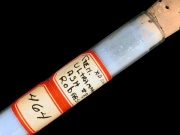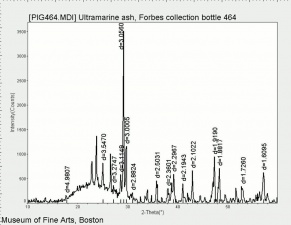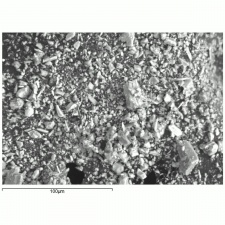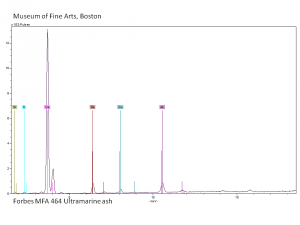Difference between revisions of "Ultramarine ash"
Jump to navigation
Jump to search
m (Text replace - "== Authority ==" to "== Sources Checked for Data in Record ==") |
m (Text replace - "\[http:\/\/cameo\.mfa\.org\/materials\/fullrecord\.asp\?name=([^\s]+)\s(.*)\]" to "$2") |
||
| Line 2: | Line 2: | ||
== Description == | == Description == | ||
| − | The end-product of the refining process used to produce [ | + | The end-product of the refining process used to produce [[ultramarine%20blue%2C%20natural|natural ultramarine blue]] pigment from [[lapis%20lazuli|lapis lazuli]]. Ultramarine ash contains small blue particles mixed with a large proportion of colorless materials, such as calcite and silicates. Ultramarine ash is a transparent blue-gray pigment that has been used for glazing. |
== Synonyms and Related Terms == | == Synonyms and Related Terms == | ||
Revision as of 12:01, 10 May 2016
Description
The end-product of the refining process used to produce natural ultramarine blue pigment from Lapis lazuli. Ultramarine ash contains small blue particles mixed with a large proportion of colorless materials, such as calcite and silicates. Ultramarine ash is a transparent blue-gray pigment that has been used for glazing.
Synonyms and Related Terms
mineral blue; Sander's blue; Saunder's blue; bleu cendres; vein stone
Other Properties
Discolors when exposed to weak acids or sulfur fumes.
Hazards and Safety
No significant hazards.
Additional Information
J. Plesters, "Ultramarine Blue, Natural and Artificial", Artists Pigments, Volume 2, A. Roy (ed.), Oxford University Press: Oxford, 1993.
Additional Images
Sources Checked for Data in Record
- Ralph Mayer, A Dictionary of Art Terms and Techniques, Harper and Row Publishers, New York, 1969 (also 1945 printing)





